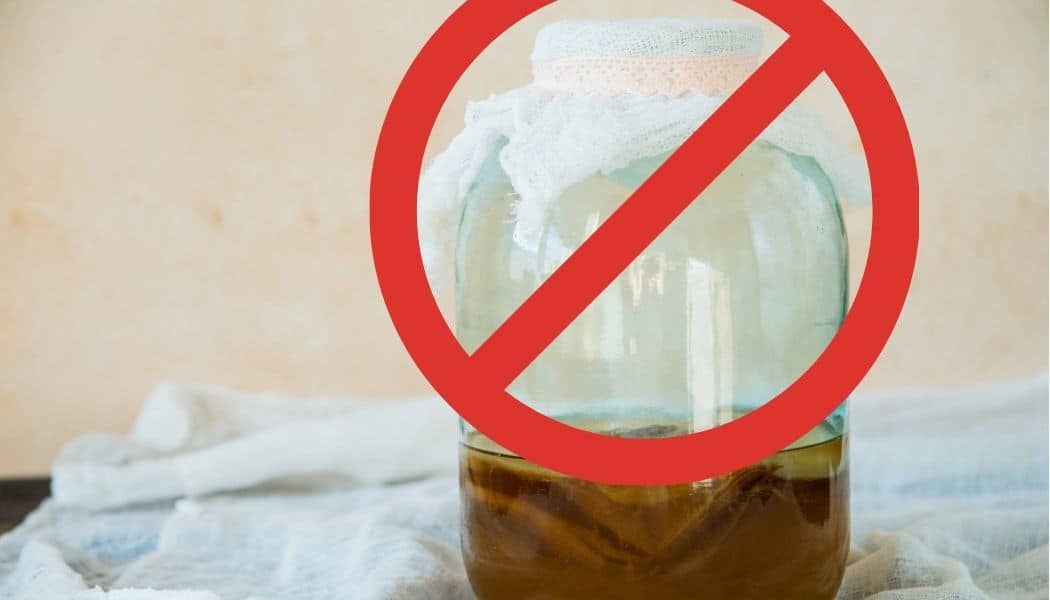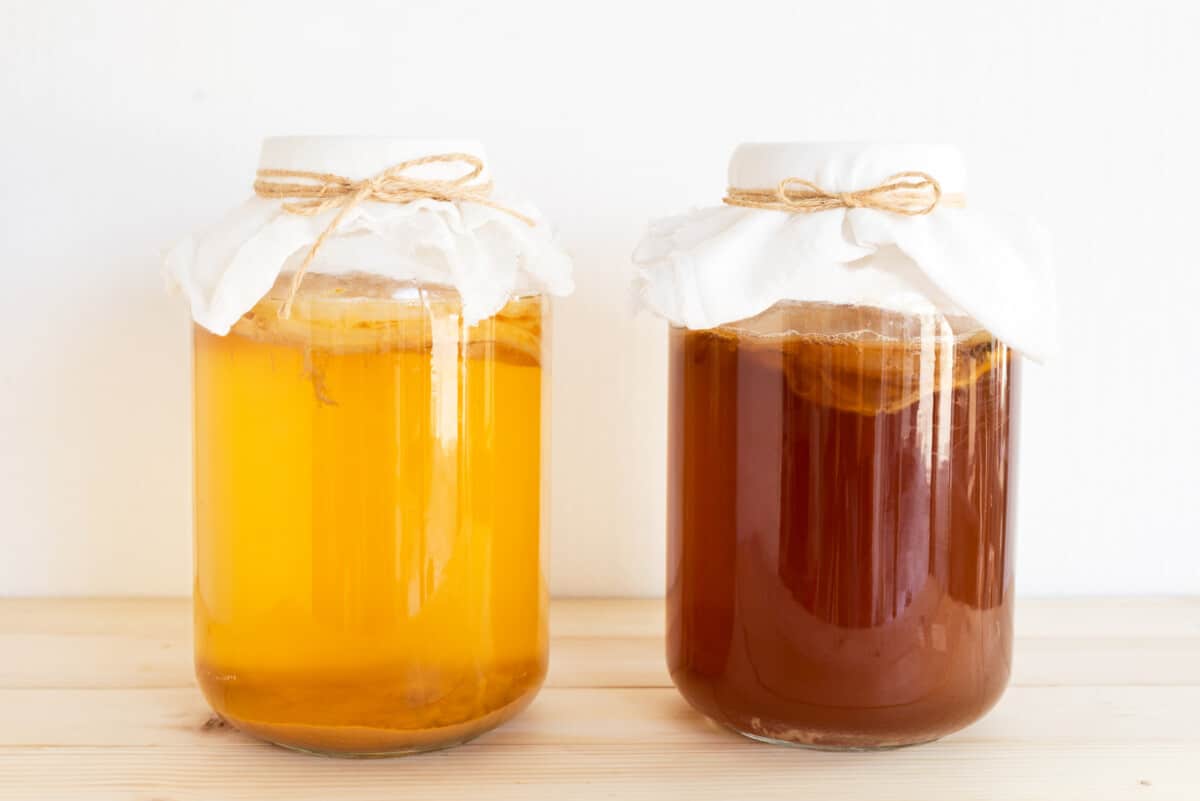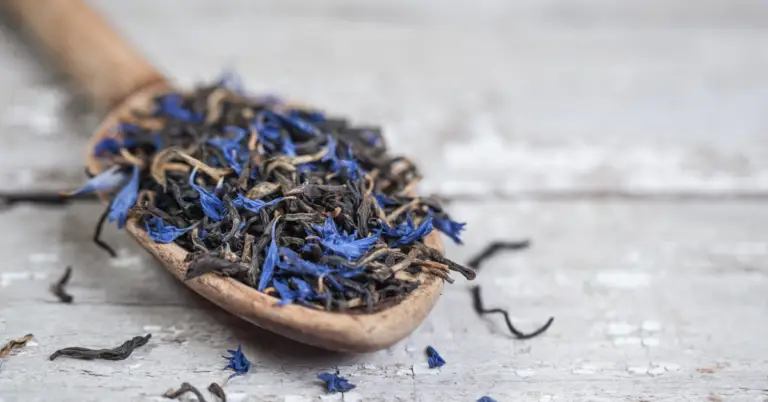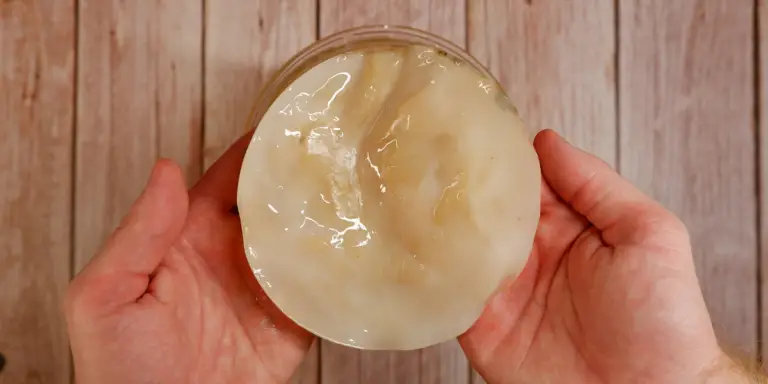What to Use to Cover Your Kombucha Jar. Everything You Need To Know!
One of the first questions I had after I finished setting up my first batch of Kombucha was: What can I use to cover my Kombucha jar? I googled it and, the answer I found was not a good one, cheesecloth. Luckily, I didn’t have any in my house and ended up using substitutes. After a while, I did a more thorough search and found the right answer (spoiler alert! it is not cheesecloth), so I decided to write this article to help others in the same position.
What should I use to cover my Kombucha jar? You should use a breathable cloth and a rubber band. Kombucha needs oxygen at the beginning of the fermentation process, so you shouldn’t use a lid for the first fermentation. The cloth needs to be breathable, have a tight weave, and not allow fruit flies to pass (this is the problem with cheesecloth). Below is a list of objects found in the house that will work great if you do not have a cover made especially for it. You can also buy jar covers online.
- Coffee Filter
- Paper Towel
- Pillow Case
- T-shirt
- Tea Towels
- Handkerchief
They must be clean and should not be in direct touch with the ferment.
For most new kombucha enthusiasts it might seem weird to use an object that can be easily found in your house instead of a cheesecloth. Don’t worry! This method is backed up by science and by the experience of many fellow fermenters.

What Characteristics Does The Cloth Must Have To Be The Perfect Cover for My Kombucha Jar?
Ok, we already know that oxygen is necessary at the beginning of the kombucha’s fermentation process, so we shouldn’t use a lid. However, if you did it for a few days, don’t worry! Just change it for a breathable cloth and wait. In case there is mold or a bad smell, start again with a new SCOBY. When you are moving your Kombucha to a new home, it is fine to put the lid on the jar, it will survive even a few days covered. If possible though, try to move when you have a more mature fermentation or when you are on a fermentation break but avoid moving your ferment just after adding new sweet tea.
We want the air to get in, but nothing else. The smell of the kombucha attracts fruit flies and other bugs that we want to keep away. Another reason to cover it is that there might be particles in the environment that could fall into your fermented beverage, which could lead to mold or undesirable bacteria growth in it.
The cover for the kombucha jar needs a tight weave that keeps fruit flies and other bugs from infesting and laying eggs on your SCOBY.
The cloth needs to be clean to prevent any unnecessary contamination. Ideally, it should have no loose strings that could fall into the kombucha or your SCOBY. They also should be washed by hand, without the use of strong chemical products that could harm the marvelous microbes we are brewing.
If you don’t have a suitable cloth, you could use a paper towel or a coffee filter. Both work fine but are not my favorite options as they can degrade more easily and are not as sustainable as a cloth that can be washed and reused. Muslin cloths are also good options.
To secure the cloth to the jar, you can use anything elastic that leaves no gaps. You would be surprised how fruit flies manage to find a way inside anything that is not properly protected. I like to use hair elastic bands, like the ones found in the women’s hair accessories section. You can also use rubber bands. Another option that works great depending on how thick your cloth is, would be the outside part of a mason jar lid. You just cover the jar and put the outer ring like you normally would.
Checklist to Choose a Cloth to Cover Your Kombucha Jar
- Don’t use the lid. DON’T USE A CHEESECLOTH!
- Breathable cloth (allows the air inside)
- Tight weave (aka you can’t see through it, like in the cheesecloth case)
- Not fraying

Why Does Kombucha Need Oxygen
The first fermentation is actually divided into two steps, that after a few days, will take place simultaneously. The first step is anaerobic (does not need oxygen) and is carried by the yeast present in the SCOBY. It will convert the sugar added to the tea into ethanol. This is the reason why kombucha might have trace amounts of alcohol.
The second part of the fermentation is made by the acetic acid bacteria and is an aerobic (needs oxygen) process. Those bacteria will ferment the alcohol produced by the yeast into acetic acid. Some people will argue the liquid itself has oxygen, and this is true initially. However, this oxygen would be rapidly consumed by the fermentation process. For this reason, the fermented liquid must have access to oxygen.
Acetic acid bacteria need oxygen to transform the alcohol produced by the yeast into CO2 and acetic acid.
The bacteria responsible for the fermentation of Kombucha are acetic acid bacteria, the same family of bacteria from vinegar, and they all behave in a similar way. The quote from the study below demonstrates the fermentation process in a neutral environment, not trying to form or analyze a drink or food product, but the bacteria.
Acetic acid produced via fermentation. Its pathway is the conversion of glucose to ethanol and ethanol to acetic acid. In the first step, Saccaromyces cerevesiae (yeast) converts fermentable sugar of molasses into ethanol and carbon dioxide. In the second step, acetobacter aceti (acetic acid bacteria) converts ethanol into acetic acid and water
PRODUCTION OF ACETIC ACID FROM MOLASSES BY FERMENTATION PROCESS
Rutu Patel, Hiral N. Pandya
Now, this other study quoted just below describes the process the occurs in the kombucha. You will note the fermentation behaves the same because the microorganisms are from the same family and therefore behave the same too.
Kombucha is a traditional beverage obtained by fermenting sugary tea with a symbiotic culture of acidophilic yeasts and AAB [acetic acid bacteria] embedded in a microbial cellulose layer known as tea fungus. The yeasts convert the sugar to organic acids, CO2 and ethanol. The produced ethanol is later oxidised by AAB to acetic acid.
Acetic Acid Bacteria in the Food Industry: Systematics, Characteristics and Applications
Why is it Ok to Seal Off The Second Fermentation, but Not The First Fermentation?
During the second fermentation, the goal is to trap the CO2 to create carbonation. The bacteria are responsible for fermenting the tea, and they need oxygen to thrive and keep fermenting at full speed. However, the yeast does not need it and is the one responsible for the production of CO2, so it will keep working, even in an airtight container. To trap the CO2, you need the lid to be closed so it does not leak any gases, in which case you would end up with a flat kombucha. If you want more information on the subject, check this article about kombucha not carbonating enough, there I go deeper into this subject.
The goal of the first fermentation, on the other hand, is to ferment the sweet tea. If you want to, it is ok to drink the kombucha without doing the second fermentation step. It will have the same health benefits and a pleasant unflavored kombucha taste, but it won’t have that soda-like texture. If you use an airtight lid on the first fermentation, your result would be carbonated (and possibly alcoholic) sweet tea instead of fermented tea.
In case you don’t like carbonated drinks but feel like having a flavored kombucha, you can also flavor the kombucha in a new jar with the fruits and leave it covered with the cloth instead of the lid. It will keep fermenting and will end up with a deeper taste. Just remember to remove the SCOBY and save some starter liquid for the next batch!



